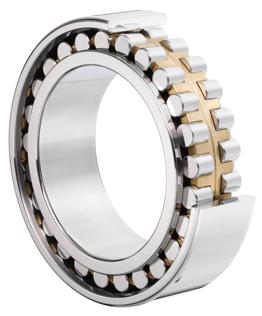







Don't know your item number? Give us your information, and we'll help you find exactly what you need.
LocateBallBearings offers an immense selection of roller bearings to choose from, while providing you with various context on these bearings/bearing types, the best ways to use them, as well as, popular applications and the industries they’re used in.
Here at LocateBallBearings we offer many different types of ball bearings to suit our customers needs. A few of the Roller Bearing types you will find on our site can range from Assemble bearings, Insert bearings, Tapered bearings, Flange bearings, to Wheel bearings, and so many more. Check out all of the listed Roller Bearing types we offer in our category sidebar to the left, by using our Bearing search finder, or just click on our main navigation Roller Bearings.
All you need to understand about roller bearings.
If you are wondering whether you need a roller bearing, this guide is for you. Understand an in-depth look on how roller bearings work and how to use them.
Rollers are used in many different industries, from heavy equipment to manufacturing. They're also an integral component of several commercial and industrial sectors. Thus, it's also essential for you as a user to have the information since you will probably use them at some point in your life.
This article has everything you need to know about roller bearings — from their history to their physical properties to the components that make up a roller bearing system.
If you want to know how they work and what they do, this is the guide.
There are four primary properties to consider when discussing roller bearings.
The first property is load capacity, which is the load that the bearing can handle before it becomes ineffective. The second property is speed, which is how fast the bearing can spin without causing excessive noise.
The third property is friction, which refers to how much resistance there will be against the rotational motion with this bearing. Lastly, there's life expectancy, which refers to how many hours an approach can work for before it needs to be replaced or repaired.
Roller bearing has a basic framework, or skeleton, consisting of the outer and inner rings. The rings are made from an alloy, and each one is fitted with ball bearings to help reduce friction and cages that hold the ball bearings in place.
In addition, roller bearings consist of shields — which serve as protective barriers for the rolling elements on both sides of the bearing. However, a guard is needed to protect these parts because they are sensitive to impacts and abrasions.
There's an additional metal disc called rollers for some bearings, which can be included to act as a cage or independent component in a bearing system.
Different types of rollers have other uses. For example, spherical roller bearings are used primarily in heavy machinery and high-velocity applications.
They're designed to resist radial loads that can cause premature failure. On the other hand, tapered roller bearings are used in slower applications like compressors and pressure vessels.